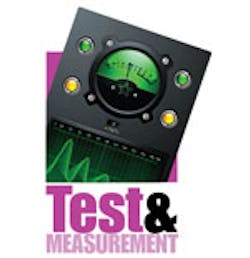T est & measurement (T&M) users face greater challenges in configuring their systems to optimally suit their testing needs. Contributing to these challenges has been the availability of a bewildering array of test equipment for a growing number of new applications, as well as the large number of buses available to interconnect their test gear.
This is where software comes in to pull all the pieces together into a single "hybrid" system. It puts users in the driver's seat by providing them with easy access to test functions.
The single biggest contributor to the up-front cost of a test system is the time it takes for a T&M user to write programs to control the system. When creating test code for design validation systems, a user must consider writing code for its re-usability and for leveraging it from another test program. Most importantly, code programs should be independent of any specific piece of test equipment.
Click here to download the PDF version of this entire article.
About the Author
Roger Allan
Roger Allan is an electronics journalism veteran, and served as Electronic Design's Executive Editor for 15 of those years. He has covered just about every technology beat from semiconductors, components, packaging and power devices, to communications, test and measurement, automotive electronics, robotics, medical electronics, military electronics, robotics, and industrial electronics. His specialties include MEMS and nanoelectronics technologies. He is a contributor to the McGraw Hill Annual Encyclopedia of Science and Technology. He is also a Life Senior Member of the IEEE and holds a BSEE from New York University's School of Engineering and Science. Roger has worked for major electronics magazines besides Electronic Design, including the IEEE Spectrum, Electronics, EDN, Electronic Products, and the British New Scientist. He also has working experience in the electronics industry as a design engineer in filters, power supplies and control systems.
After his retirement from Electronic Design Magazine, He has been extensively contributing articles for Penton’s Electronic Design, Power Electronics Technology, Energy Efficiency and Technology (EE&T) and Microwaves RF Magazine, covering all of the aforementioned electronics segments as well as energy efficiency, harvesting and related technologies. He has also contributed articles to other electronics technology magazines worldwide.
He is a “jack of all trades and a master in leading-edge technologies” like MEMS, nanolectronics, autonomous vehicles, artificial intelligence, military electronics, biometrics, implantable medical devices, and energy harvesting and related technologies.
